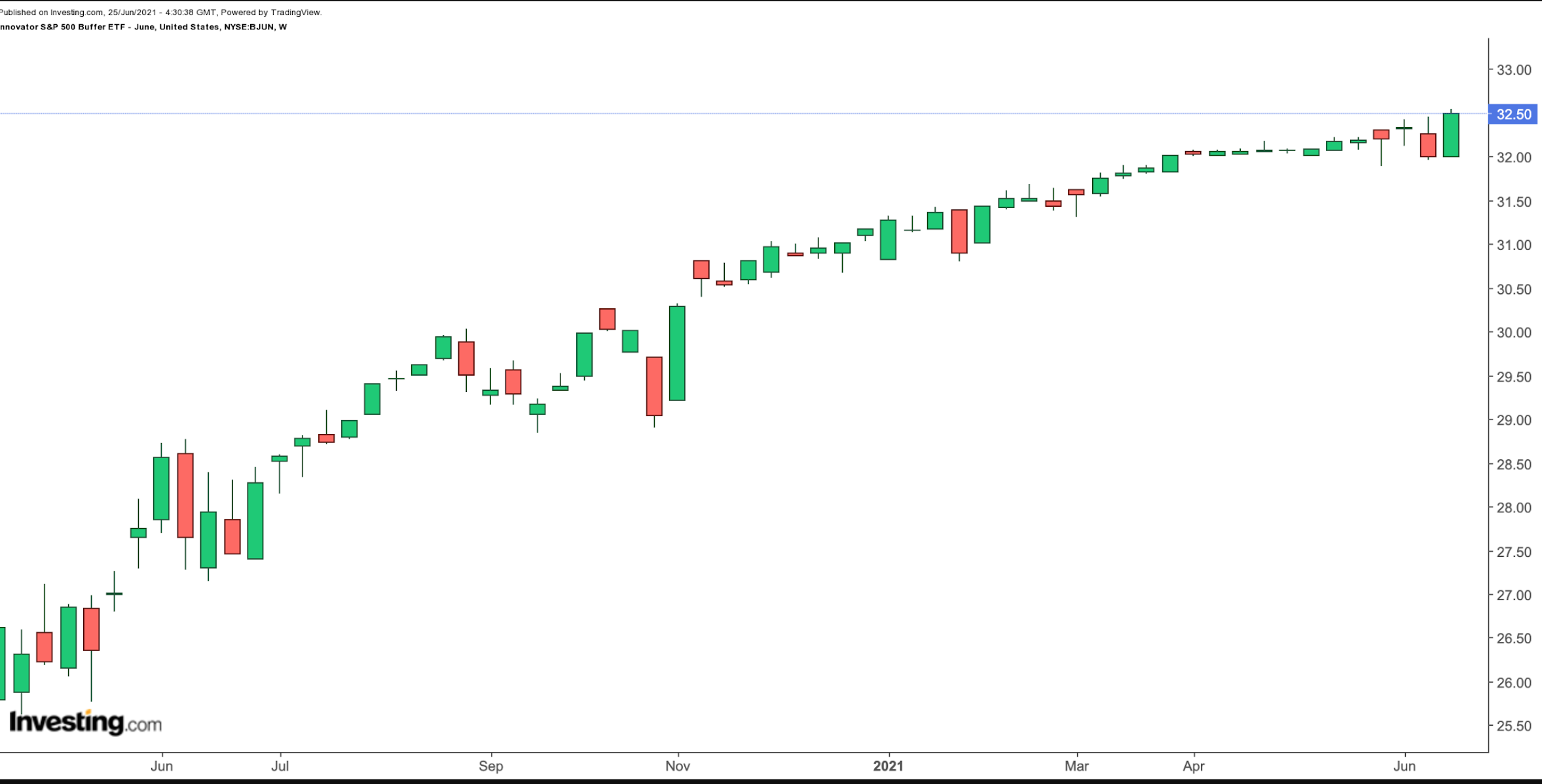Investors use exchange-traded funds (ETFs) to have exposure to various sectors or themes, as well as to achieve a number of different objectives. Today, we look at buffer ETFs, a niche product that are sometimes referred to as defined outcome funds.
These buffer ETFs absorb a portion of stock market losses while allowing the investor to participate in the growth potential of an equity index. But any potential gains are capped. How much an investor gives up in returns depends, in part, on the amount of protection the fund offers. The greater the buffer, the smaller the potential gain during the outcome period, usually a full year.
The fund's prospectus clearly highlight the buffered amount beyond which an investor would be subject to losses. This cushion is usually a percentage of the net asset value at the beginning of the new one-year outcome period.
An investor could buy or sell a buffer ETFs at any point in a trading day. We need to emphasize that the outcomes that a fund seeks to provide can only be realized if investors remain throughout the outcome period. Those who buy the fund after the new period has begun may not necessarily achieve the maximum return.
Such funds invest in one-year options linked to a broad benchmark, like the S&P 500 index. Readers might be interested to know that the index is up about 13.5% year-to-date and hit an all-time-high in June.
Each buffer ETF has a definite amount of loss that it would protect against—9%, 10%, 15%, 20% or 30% before fees—over a 12-month period. That percentage is the buffer amount.
With that information, here is our buffered-outcome fund for today to potentially mitigate risk and lower volatility. They could appeal to investors who want to invest in the SPDR® S&P 500 (NYSE:SPY), which tracks the S&P 500.
Innovator S&P 500 Buffer ETF - June
- Current Price: $32.50
- 52-Week Range: $27.40 - $32.55
- Expense Ratio: 0.79% per year
The Innovator Innovator S&P 500 Buffer ETF - June (NYSE:BJUN) tracks the returns of SPY, up to a predetermined cap, while buffering investors against the first 9% of losses over the outcome period, currently from June 1, 2021, to May. 31, 2022. Net asset value of the fund currently stands at $83.4 million.

The starting cap was 12.09%, gross of the 0.79% management fee. In other words, if held during the outcome period, the maximum return could be 11.3%, even if the SPDR S&P 500 ETF Trust were to have a higher percentage return.
With a buffer ETF, a ‘home run’ is not possible. If SPY were to, for instance, double in value between June 1, 2021, and May 31, 2022, the maximum return of BJUN would still be capped at 11.3%. BJUN, like other similar funds, can be held indefinitely, resetting at the end of each outcome period.
To achieve its objective, BJUN holds an actively managed basket of Flexible Exchange® Options, or FLEX Options, with different strike prices and same expiration date.
BJUN’s detailed options strategy is, in simple terms, a modified collar strategy with a defined pattern of returns for the full year. But it would not be possible to know how the ETF might perform on a given day during the year. Readers should note also that as the fund uses options, there is no dividend.
BJUN hit a 52-week high on June 15. Interested readers might want to look at other similar funds whose outcome period will start in the weeks ahead. For example, the current outcome period for the Innovator S&P 500 Buffer ETF – July (NYSE:BJUL) will end on June 30 and the new period will start the next day.
Finally, in addition to buffer ETFs offered by Innovator Capital Management, there are other similar products offered by various fund sponsors, including AlianzIM, First Trust and TrueShares.
Other than the S&P 500, defined-outcome funds track returns of indices, such as the NASDAQ 100, Russell 2000 or MSCI EAFE. Fund sponsors typically list either a quarterly or a monthly series of funds.
Investors who would like some level of participation in the up move in an asset (such as an index), while having a predetermined level of downside protection, might want to research these funds further. We’ll continue to cover them as well.
